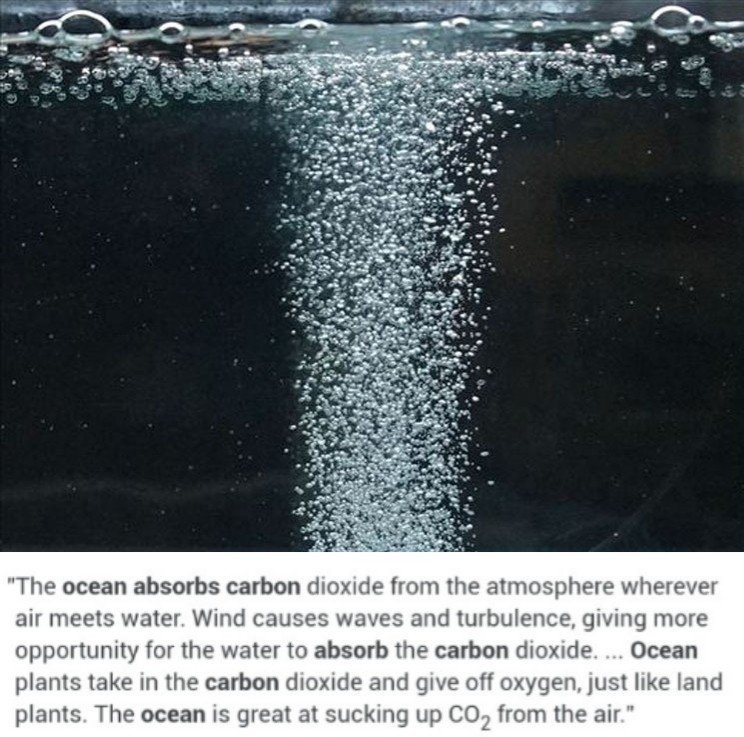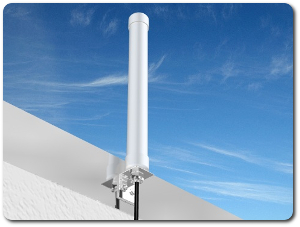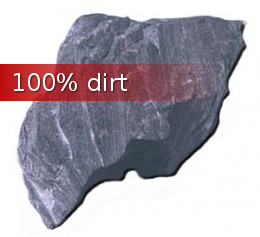Cities and towns around the World flowing with billions of liters of free renewable fuel.
Getting Off Oil, Latest news, World news Monday, December 3rd, 2012
free renewable bio fuel of today and the future for every city and town around the World.
It is possible for every city and town in the World to produce their own renewable and biodegradable energy fuel supply as well as be eco friendly. The infrastructure is already there and the fuel is already being pumped through the cities. What is it that will provide every city and town with a renewable and biodegradable fuel and at the same time drastically clean up the environment? A fuel source that is free for the taking. The answer to every city and town’s energy needs is human sewage.
Currently Canadian and U.S. cities pump billions of liters of untreated sewage into the Great Lakes every year. The main reason for pumping raw sewage into the Great Lakes is a financial reason. Before now cities saw sewage as worthless. It costs $millions to treat sewage and some cities just don’t have the budget to treat all of the sewage. “Millions of Ontarians and their kids, drink, bathe, and eat food grown with Great Lakes water yet cities are to this day pumping billions of liters of “untreated” sewage into them. The answer to the cities needs both for energy and water treatment is treating the human sewage as a fuel source.
How can human sewage be used as a fuel source? How can human sewage generate electricity to power street cars, lights, air conditioners, home appliances and business computers and machines? As unappealing as it may seem human sewage can cut greenhouse gases, help cleanup water supplies and add a new source of green and endlessly renewable fuel. Left on its own to decay, waste pumped from septic systems (known as septage) produce methane gas (a powerful greenhouse gas in itself) and carbon dioxide, the most popularized greenhouse gas. The result is steady supply of methane that can be used directly as fuel or mixed with natural gas for pipeline distribution. (Natural gas is mostly methane. The mix is relatively easy.) Septic waste could become a valuable commodity since it could be used to make fuel. If septic waste were channeled away from wastewater treatment facilities those facilities would be left to process only gray water, like dirty dish water.

Methane Fuel Generation From Human Wastes
Anaerobic fermentation or digestion is the most promising process for converting organic materials to methane and other gases. A simple apparatus can be constructed to produce bio-gas.Bio-gas usually contains about 60 to 70 percent methane, 30 to 40 percent carbon dioxide, and other gases.

Asia and Africa are already taping into the fuel of the future – biogas
Converting organic materials, such as human wastes, to an easily used form of fuel can be accomplished by several methods. The process with the greatest potential is anaerobic fermentation or digestion.
The extraction of fuel from wastes using anaerobic digestion to produce bio-gas is not new and the general technology is well known. Bio-gas, which is methane and other gases, has been known as swamp gas, sewer gas and fuel gas. Sewage treatment plants generate bio-gas from the sewage sludge as part of the sewage treatment processes. Since sewage treatment is a 24/7 process bio-gas is being produced 24/7 as well. Today though, the bio-gas is not collected and used as a fuel source for the energy needs of the city, it is all vented. Using human waste to produce a renewable fuel source is not rocket science. All you have to know is how the fuel is produced and then you simply make modifications to the sewage processing plants to start producing an unending supply of fuel.
First off methane is produced by bacteria. The bacteria are anaerobes and operate only in anaerobic environments (no free oxygen). Constant temperature, pH and fresh organic matter promote maximum methane production. Temperatures usually are maintained at approximately 95 degrees F. Other temperatures can be used if held constant. For each 20 degrees F decrease, gas production will be cut approximately one half or will take twice as long. A constant temperature is critical. Temperature variations of as little as 5 degrees F can inhibit the methane-formers enough to cause acid accumulation and possible digester failure.
Anaerobic digestion is a series of processes in which micro organisms break down biodegradable material in the absence of oxygen and is widely used to treat wastewater. As part of an integrated waste management system, anaerobic digestion reduces the emission of landfill gas into the atmosphere. Anaerobic digestion is widely used as a renewable energy source because the process produces a methane and carbon dioxide rich biogas suitable for energy production helping replace fossil fuels. Also, the nutrient-rich digestate can be used as fertiliser. The digestion process begins with bacterial hydrolysis of the input materials in order to break down insoluble organic polymers such as carbohydrates and make them available for other bacteria. Acidogenic bacteria then convert the sugars and amino acids into carbon dioxide, hydrogen, ammonia, and organic acids. Acetogenic bacteria then convert these resulting organic acids into acetic acid, along with additional ammonia, hydrogen, and carbon dioxide. Methanogens, finally are able to convert these products to methane and carbon dioxide.
Anaerobic digestion is a two-part process and each part is performed by a specific group of organisms. The first part is the breakdown of complex organic matter (manure) into simple organic compounds by acid-forming bacteria. The second group of microorganisms, the methane-formers, break down the acids into methane and carbon dioxide. In a properly functioning digester, the two groups of bacteria must balance so that the methane-formers use just the acids produced by the acid-formers.
Anaerobic digestion facilities have been recognised by the United Nations Development Programme as one of the most useful decentralised sources of energy supply, as they are less capital intensive than large power plants.
A simple apparatus can produce bio-gas. The amount of the gas and the reliability desired have a great influence on the cost and complexity of the system. A simple batch-loaded digester requires an oxygen-free container, relatively constant temperature, a means of collecting gas, and some mixing. Because methane gas is explosive, appropriate safety precautions are needed.
The solution to 2 very major problems (energy needs and waste treatment) that the World faces is already flowing beneath their streets. The solution is provided by its citizens 24/7 making it the most abundant and endlessly renewable source of fuel. Just redirecting sewage into a digester in urban areas meets the entire Kyoto protocol requirements for North American cities without even considering the natural gas production.
No more expensive drilling for fuel deposits. No more waging wars of aggression to steal control of the last remaining oil and natural gas. No more Exxon Mobil and BP oil spill disasters. Man is the #1 renewable and biodegradable fuel source that can fuel every city and town around the World.
Even in US occupied Afghanistan this free renewable fuel is being utilized. Overseen by the US Army. I guess the proverb “if you can’t beat them, join them” is the order of the day.
It is ironic that the US Army would be involved in building projects that taps into this free and infinite supply of renewable fuel. The US government’s attack against Afghanistan was to remove the Taliban in order for the US to build and control the Trans-Afghanistan Pipeline (TAP or TAPI), a natural gas pipeline that was to transport Caspian Sea natural gas from Turkmenistan through Afghanistan into Pakistan and then to India.
On FEBRUARY 12, 1998, US oil giant Unocal (on August 10, 2005, Unocal merged with Chevron) petitioned the US government to overthrow the Afghan Taliban government to build a US controlled Trans-Afghan gas pipeline – “From the outset, we have made it clear that construction of the pipeline we have proposed across Afghanistan could not begin until a recognized government is in place that has the confidence of governments, lenders, and our company.”

If only the US Army would eradicate the Opium fields, as the Taliban did in 2001, so that the Afghan people could grow the food they need to survive. The Afghan people can’t eat Opium. In July 2000, Taliban leader Mullah Mohammed Omar, collaborating with the United Nations to eradicate heroin production in Afghanistan, declared that growing poppies was un-Islamic, resulting in one of the world’s most successful anti-drug campaigns. As a result of this Taliban ban, opium poppy cultivation was reduced by 91% from the previous year’s estimate of 82,172 hectares. The ban was so effective that Helmand Province, which had accounted for more than half of this area, recorded no poppy cultivation during the 2001 season.
The New York Times, May 20, 2001
Taliban’s Ban On Poppy A Success, U.S. Aides Say
UNITED NATIONS, May 18 — The first American narcotics experts to go to Afghanistan under Taliban rule have concluded that the movement’s ban on opium-poppy cultivation appears to have wiped out the world’s largest crop in less than a year, officials said today.
The American findings confirm earlier reports from the United Nations drug control program that Afghanistan, which supplied about three-quarters of the world’s opium and most of the heroin reaching Europe, had ended poppy planting in one season.
Since the US invasion and occupation of Afghanistan, Opium fields, once banned by the Taliban, have mushroomed again. Because of the US government’s invasion and occupation of Afghanistan the World is once again flooded with heroin.
The Canadian Parliament voted and passed into law the motion to end Canada’s war against Afghanistan on 13 March 2008, “… the government of Canada notified NATO that Canada will end its presence in Kandahar as of July 2011, and, as of that date, the redeployment of Canadian Forces troops out of Kandahar and their replacement by Afghan forces start as soon as possible, so that it will have been completed by December 2011.”
Stephen Harper (disentitled as Prime Minister of Canada in March 2011 after being found guilty of contempt of Parliament) unilaterally defied the will of the people by ordering, without Parliamentary approval, up to 950 Canadian “combat” soldiers back to Afghanistan. Harper said the “combat troops” from CFB Gagetown are being redeployed to provide training and carry out policing duties. What policing is Harper talking about? Guarding the Afghan drug warlords and their Opium fields. Shooting and killing anyone who tries to eradicate the Opium or attack the US drug trafficking industry in Afghanistan.
Short URL: https://presscore.ca/news/?p=3300

 The Halifax International Security Forum was founded in 2009 as a propaganda program within the German Marshall Fund (founded June 5, 1972 by West German Chancellor Willy Brandt) by the Crown in Canada using Crown Corp ACOA & DND funds. The Halifax International Security Forum is a front that is used to recruit top US, UK and Canadian gov and military officials as double agents for Canada's WWI, WWII enemy and wage new Vatican Germany Cold War.
High Treason: s.46 (1) Every one commits high treason who, in Canada (c) assists an enemy at war with Canada, ..., whether or not a state of war exists". Every one who, in Canada assists Canada's enemies wage "piecemeal WWIII" Cold War by organizing, funding and participating in the Germany government politically and militarily benefitting / lead Halifax International Security Forum is committing high treason.
The Halifax International Security Forum was founded in 2009 as a propaganda program within the German Marshall Fund (founded June 5, 1972 by West German Chancellor Willy Brandt) by the Crown in Canada using Crown Corp ACOA & DND funds. The Halifax International Security Forum is a front that is used to recruit top US, UK and Canadian gov and military officials as double agents for Canada's WWI, WWII enemy and wage new Vatican Germany Cold War.
High Treason: s.46 (1) Every one commits high treason who, in Canada (c) assists an enemy at war with Canada, ..., whether or not a state of war exists". Every one who, in Canada assists Canada's enemies wage "piecemeal WWIII" Cold War by organizing, funding and participating in the Germany government politically and militarily benefitting / lead Halifax International Security Forum is committing high treason.
 Please take a moment to sign a petition to
Please take a moment to sign a petition to 









































 1917 Code of Canon Law, Canon 185 invalidates (voids) all papacies since October 26, 1958 due to the fact Cardinal Giuseppe Siri was elected Pope on the Third ballot on Oct 26 1958 but the new Pope Gregory XVII was illegally prevented from assuming the office. A Pope was elected on October 26, 1958. Thousands of people witnessed a new Pope being elected by seeing white smoke and millions were informed by Vatican radio broadcasts beginning at 6:00 PM Rome time on October 26, 1958. The papacy of Francis, Benedict, John Paul II, John Paul I, Paul VI, John XXIII and any and all of their respective doctrines, bulls, letter patents and the Second Vatican Council are all invalidated (having no force, binding power, or validity) by Canon 185 because the 1958 conclave of cardinals elected Cardinal Giuseppe Siri Pope on Oct 26 1958. Cardinal Giuseppe Siri accepted the papacy by taking the name Pope Gregory XVII but was illegally prevented from assuming his elected office.. According to Canon 185 Cardinal Angelo Giuseppe Roncalli illegally assumed the papacy 2 days later by fraud and grave fear, unjustly inflicted against Cardinal Giuseppe Siri who was lawfully elected Pope Gregory XVII. Because no Pope has been lawfully elected since October 26, 1958 the Holy See (la Santa Sede/Seat) remains vacant.
1917 Code of Canon Law, Canon 185 invalidates (voids) all papacies since October 26, 1958 due to the fact Cardinal Giuseppe Siri was elected Pope on the Third ballot on Oct 26 1958 but the new Pope Gregory XVII was illegally prevented from assuming the office. A Pope was elected on October 26, 1958. Thousands of people witnessed a new Pope being elected by seeing white smoke and millions were informed by Vatican radio broadcasts beginning at 6:00 PM Rome time on October 26, 1958. The papacy of Francis, Benedict, John Paul II, John Paul I, Paul VI, John XXIII and any and all of their respective doctrines, bulls, letter patents and the Second Vatican Council are all invalidated (having no force, binding power, or validity) by Canon 185 because the 1958 conclave of cardinals elected Cardinal Giuseppe Siri Pope on Oct 26 1958. Cardinal Giuseppe Siri accepted the papacy by taking the name Pope Gregory XVII but was illegally prevented from assuming his elected office.. According to Canon 185 Cardinal Angelo Giuseppe Roncalli illegally assumed the papacy 2 days later by fraud and grave fear, unjustly inflicted against Cardinal Giuseppe Siri who was lawfully elected Pope Gregory XVII. Because no Pope has been lawfully elected since October 26, 1958 the Holy See (la Santa Sede/Seat) remains vacant.
 Hold the Crown (alias for temporal authority of the reigning Pope), the Crown appointed Governor General of Canada David Lloyd Johnston, the Crown's Prime Minister (servant) Stephen Joseph Harper, the Crown's Minister of Justice and Attorney General Peter Gordon MacKay and the Crown's traitorous military RCMP force, accountable for their crimes of treason and high treason against Canada and acts preparatory thereto. The indictment charges that they, on and thereafter the 22nd day of October in the year 2014, at Parliament in the City of Ottawa in the Region of Ontario did, use force and violence, via the staged false flag Exercise Determined Dragon 14, for the purpose of overthrowing and besieging the government of Canada contrary to Section 46 of the Criminal Code. In a society governed by the rule of law, the government and its officials and agents are subject to and held accountable under the law. Sign the online
Hold the Crown (alias for temporal authority of the reigning Pope), the Crown appointed Governor General of Canada David Lloyd Johnston, the Crown's Prime Minister (servant) Stephen Joseph Harper, the Crown's Minister of Justice and Attorney General Peter Gordon MacKay and the Crown's traitorous military RCMP force, accountable for their crimes of treason and high treason against Canada and acts preparatory thereto. The indictment charges that they, on and thereafter the 22nd day of October in the year 2014, at Parliament in the City of Ottawa in the Region of Ontario did, use force and violence, via the staged false flag Exercise Determined Dragon 14, for the purpose of overthrowing and besieging the government of Canada contrary to Section 46 of the Criminal Code. In a society governed by the rule of law, the government and its officials and agents are subject to and held accountable under the law. Sign the online  Two of the most obvious signs of a dictatorship in Canada is traitorous Stephen Harper flying around in a "military aircraft" and using Canadian Special Forces "military" personnel from JTF2 and personnel from the Crown's traitorous martial law "military" RCMP force as his personal bodyguards.
Two of the most obvious signs of a dictatorship in Canada is traitorous Stephen Harper flying around in a "military aircraft" and using Canadian Special Forces "military" personnel from JTF2 and personnel from the Crown's traitorous martial law "military" RCMP force as his personal bodyguards.





































Here is a solution for oil and gas tailing ponds. Bacteria and gas are released from tailings ponds. Why not construct domes over them and collect the gas and burn the gas in gas powered generators instead of letting it contaminate the air. The benefits are 3 fold:
– it would reduce the heavy consumption of natural gas in the oil refining process
– it would reduce the environmental impact of the toxic tailings ponds
– it would drastically reduce the release of greenhouse gases
Farms can also produce renewable bio fuel. Carleton Corner Farms is a dairy operation with 550 head of dairy cattle, including milking cows. The farm constructed a biogas system comprised of two 1,500m3 anaerobic digesters which produces biogas to fuel a 500kW generators.
What does a 500kW generator look like?
Enough power is generated from one of these generators to power several hundred homes.
China’s largest chicken waste biogas energy plant. The plant features a dome digester system that consumes 300 tons of manure and 500 tons of wastewater daily to produce biogas that is then used by three GE engines that generate 3 megawatts of electricity for the 19,000 square-meter complex, as well as the local grid.
Just how cheap and easy is it to tap into this free renewable fuel source? Every city and town need only to erect cost effective methane gas collector domes over their sewage containment pools like the dome built for a Lafarge Cement Plant in Ontario, Canada. The cheapest domes are made from recovered recyclable plastic and the more expensive ones are built using concrete.
New York City is already harnessing this free renewable biodegradable fuel supply. The City’s Department of Environmental Protection(NYC-DEP) believes the city’s waste could become its savior. It has unveiled a plan to utilize the vast amounts of sludge, methane gas and other byproducts of wastewater as potential sources of renewable, clean energy.
Many land fill site operators are now drilling methane wells into finished fill sites to use the gas produced by the natural effect of decomposition, to power equipment for the landfill, power generators, and many other things.
In 2010 the city of Montreal in Canada announced that it was contemplating setting up a city-wide composting program where organic waste would be composted and turned into methane.
The city proposed setting up two large-scale composting factories in Dorval and at the Miron Quarry, and 2 biogas, methane-generating plants would be built in Montreal East and LaSalle.
Instead of throwing food waste to the curb for garbage pickup you and everyone else in the World can recycle it and produce your own free biogas and garden fertilizer at home. It doesn’t matter if you live in a city or town. You and everyone else can start making free biogas using table craps and mass produced and store bought components.
All you need to start making biogas is a large plastic container and a few mass produced fittings that can be bought at you local hardware store. The container has to be one that, once sealed, is airtight. One that is either already sealed or one with an air-tight fitting lid. Most 55 gallon plastic drums are already sealed with a small caped opening on the top. You will need fittings (brass barb fittings and a gas value) to make a biogas port on the top of the plastic drum. The port is where the free biogas will pass through. A gas value will be needed to either open and release the biogas or shutoff the flow of biogas. And since you will want to use that free fuel you will also need plastic tubing to pipe the gas to a gas generator (to generate electricity), barbecue (to cook your favorite barbecue meats), gas stove (to boil water), fireplace (to heat your home) or lamp (to light your patio).
And to think that for years you’ve been forking over your hard earned money for something you could have been getting for free.